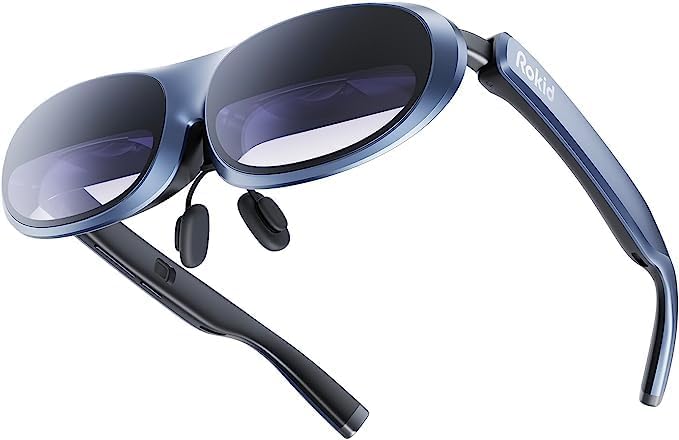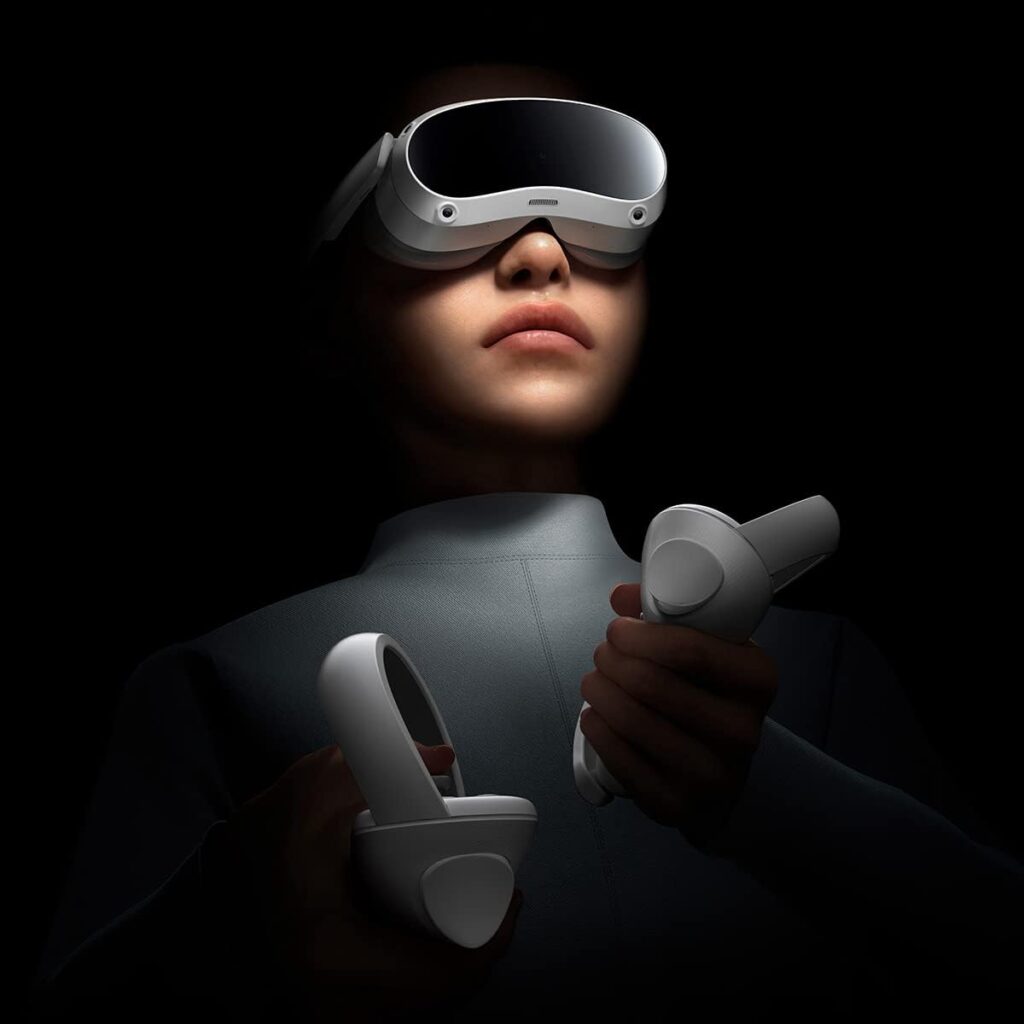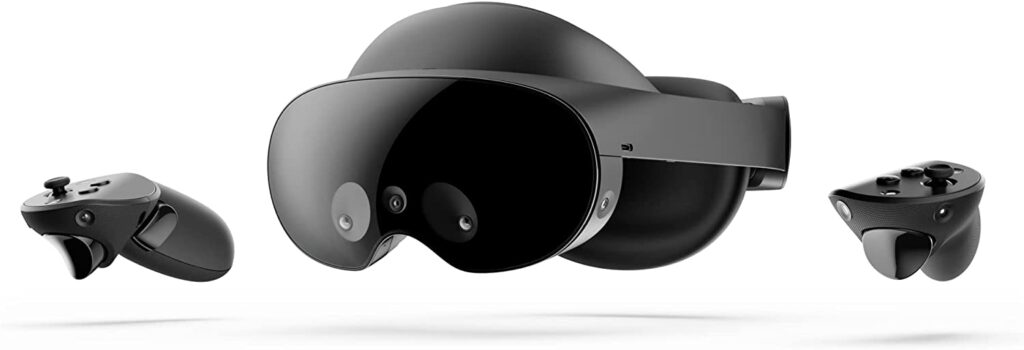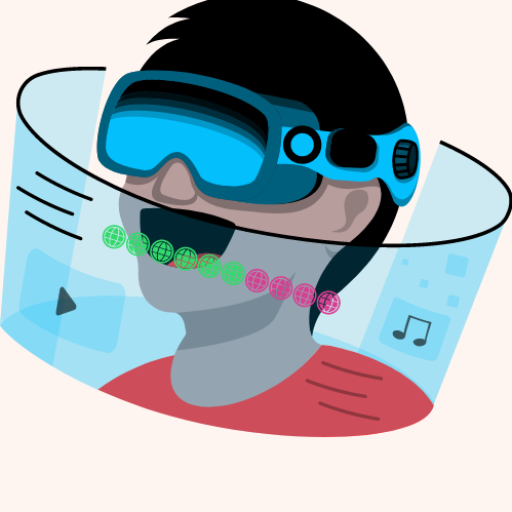Guide to Augmented Reality
Understanding Augmented Reality
A guide to Augmented reality (AR) at its essence is a technological marvel that seamlessly merges the virtual and physical worlds. Creating a harmonious blend that enhances our perception and interaction with reality. Unlike its counterpart, virtual reality (VR), which transports users entirely into digitally simulated environments. AR enhances our physical surroundings by overlaying digital elements, such as images, sounds, or data, onto the natural world in real time. This dynamic integration is made possible through a combination of cutting-edge hardware, advanced software algorithms, and the power of human imagination.
Hardware and Components
The hardware that facilitates augmented reality experiences is as diverse as the applications it serves. Smartphones and tablets, equipped with high-resolution cameras and sensors, form the most accessible AR platforms. These devices capture the user’s view of the world and superimpose digital content onto the camera feed. Smart glasses, on the other hand, provide a more immersive experience. Allowing users to view AR content directly through specially designed lenses. These glasses often incorporate more sophisticated sensors like accelerometers, gyroscopes, and depth sensors to understand the user’s environment and movements better.

How AR Works
At the core of augmented reality’s magic lies sophisticated computer vision and image recognition technologies. These technologies analyze the real-world environment captured by the device’s camera and identify objects, surfaces, and their positions. As a result of this seamlessly integrate digital content into these physical elements. This process happens in real-time. This ensures that the virtual overlays align accurately with the user’s surroundings. Creating a cohesive and convincing illusion of coexistence.
Markers and Tracking
AR systems often use markers or tracking targets to anchor digital content to specific points in the physical world. These markers can be anything from QR codes to specific patterns or objects. As a result of this the AR software can determine where to place the virtual content. Which ensures that it remains in the correct position and orientation even as the user moves or changes their viewpoint.
Types of Augmented Reality
Augmented Reality has multiple types and different levels of immersion
- Marker-Based AR: This is the most basic form of AR. Where digital content is triggered by markers in the physical environment. When the camera identifies a marker, the associated digital content is displayed. This technology is commonly used in educational materials, children’s books, and promotional campaigns.
- Markerless AR: Also known as location-based AR. This type of AR does not rely on markers. Instead, it uses the device’s GPS, compass, and other sensors to determine the user’s location and orientation. This allows for more natural interactions and can be seen in applications like navigation and location-based games.
- Projection-Based AR: This involves projecting digital content directly onto physical objects. The content adapts to the object’s shape and movement. Creating visually stunning and interactive experiences. Projection-based AR is often used in art installations and marketing events.
- Superimposition-Based AR: This form overlays digital elements onto a physical environment. Furthermore it enhances the user’s perception of the real world. These overlays can include information, animations, or 3D models. Shopping apps that let you try on clothes virtually or navigation apps that overlay directions on your camera feed are examples of superimposition-based AR.
Augmented Reality’s Impact
AR’s impact is far-reaching and spans across various industries. It has transformed gaming, allowing players to interact with virtual objects in their surroundings. In education, AR makes learning engaging and interactive, allowing students to manipulate 3D models and explore concepts more deeply. In healthcare, surgeons can access critical patient data without taking their eyes off the operation. Improving precision. The world of retail has experienced a revolution, with customers trying on products virtually before making purchases.
The future of augmented reality is as exciting as its present. As technology advances, AR is poised to become more immersive, more integrated with our daily lives, and more capable of merging the digital and physical realms seamlessly. With each step forward, augmented reality continues to redefine how we perceive, interact with, and make sense of the world around us.

Applications of Augmented Reality
- Gaming: The gaming industry has been at the forefront of embracing augmented reality’s potential. The breakthrough success of games like Pokémon GO demonstrated how AR can blend the virtual and physical worlds to create immersive and engaging experiences. Beyond the mainstream, AR has found its way into escape room games, turning living rooms into puzzle-filled environments. Additionally, educational AR games are emerging, teaching history, science, and problem-solving skills while keeping players entertained.
- Retail: Augmented reality has disrupted the retail landscape by offering innovative ways for consumers to interact with products before purchasing. Virtual try-on experiences for clothing, accessories, and even makeup have become increasingly popular. This not only enhances the online shopping process but also reduces the rate of returns, benefiting both consumers and businesses. In the furniture industry, AR enables customers to visualize how different pieces would fit and look in their homes, revolutionizing how people shop for home furnishings.
- Education: Augmented reality’s impact on education is profound. Traditional learning methods can sometimes fall short in conveying complex concepts. AR addresses this challenge by creating interactive and visually engaging learning experiences. In fields like anatomy, students can explore detailed 3D models of the human body, rotating and zooming in to understand structures better. Historical events come to life as students witness key moments in their actual locations through AR-powered history lessons.
- Healthcare: The healthcare sector has embraced augmented reality to improve patient care and medical training. Surgeons benefit from AR’s ability to display critical patient information, such as MRI scans, directly onto their field of view during procedures. This assists in making precise decisions without diverting attention to external monitors. Medical students can practice simulated surgeries using AR to gain hands-on experience before stepping into the operating room, enhancing their skills and confidence.
- Tourism: Augmented reality has transformed the way we explore new places. With AR-equipped smartphones or smart glasses, tourists can explore historical sites and landmarks, seeing how they appeared in different eras. Museums and cultural institutions use AR to provide interactive exhibits, allowing visitors to engage deeply with art, artifacts, and history. AR-enabled guided tours offer an immersive way to learn about destinations, making travel experiences more enriching.
- Navigation: Navigation apps equipped with AR capabilities have redefined how we navigate our surroundings. AR navigation enhances real-time directions by overlaying arrows, street names, and destination markers onto the live camera feed. This technology is particularly useful for pedestrians, helping them navigate unfamiliar cities with ease. Car manufacturers are also integrating AR into heads-up displays, allowing drivers to receive driving instructions without taking their eyes off the road.
- Architecture and Design: Architects and interior designers use AR to visualize and showcase their concepts to clients. Through AR, 3D models of buildings or interiors can be superimposed onto physical spaces, giving clients a realistic preview of the final result. This speeds up decision-making processes and ensures that clients have a clear understanding of the proposed designs.
- Advertising and Marketing: Brands are harnessing the attention-grabbing potential of AR to create innovative marketing campaigns. Interactive advertisements allow consumers to engage with products in new ways – from virtually trying on makeup to seeing how furniture fits into their homes. These campaigns generate excitement, increase brand awareness, and drive customer engagement.
- Entertainment and Live Events: AR is transforming live entertainment experiences, from concerts to sports events. Fans can use AR apps to access real-time statistics, replays, and player information while attending games. In the entertainment industry, AR enhances live performances by integrating virtual elements into the show, blurring the lines between reality and spectacle.
- Industrial and Manufacturing: Industries like manufacturing and maintenance benefit from AR’s ability to provide real-time information to workers on the shop floor. AR displays can guide workers through assembly processes, reducing errors and increasing efficiency. Maintenance technicians can receive step-by-step instructions for repairs, even if they lack prior experience with a particular machine.
The applications of augmented reality continue to expand as technology evolves and creative minds find new ways to merge the physical and digital realms. From entertainment and education to healthcare and beyond, AR’s potential to reshape how we interact with our world is vast and exciting. As businesses, educators, and innovators continue to explore its capabilities, augmented reality is poised to become an integral part of our daily lives.

Benefits of Augmented Reality
- Enhanced User Experience: Augmented reality enhances the way we interact with our environment, adding a layer of excitement and engagement to everyday activities. Whether it’s gaming, shopping, learning, or exploring, AR elevates these experiences by blurring the line between reality and digital content. This heightened engagement makes the activities more enjoyable and memorable.
- Real-time Information: One of the most significant advantages of AR is its ability to provide real-time information without interrupting the user’s current task. In scenarios like navigation, users can receive turn-by-turn directions overlaid on the live camera view, eliminating the need to switch between apps or devices. This seamless integration of information improves efficiency and reduces cognitive load.
- Skill Development and Training: Augmented reality opens up new possibilities for hands-on learning and skill development. Training in fields like medicine, aviation, and mechanics benefits from realistic simulations that allow learners to practice in a safe environment. This approach accelerates the learning curve, as individuals gain practical experience without the risks associated with real-world situations.
- Innovation in Marketing: Brands are tapping into the interactive nature of AR to revolutionize marketing campaigns. Through virtual try-ons, customers can see how products like clothing, accessories, or even makeup would look on them before making a purchase. This not only increases consumer confidence but also creates a novel and memorable interaction with the brand.
- Remote Collaboration: Augmented reality is transforming the way teams collaborate, especially in industries that require on-site expertise. Remote experts can provide real-time guidance by annotating the live view of field workers or technicians, helping them troubleshoot issues or complete complex tasks. This reduces downtime, travel costs, and the need for specialized personnel to be physically present.
- Data Visualization: AR has the power to turn abstract data into visual insights. Complex datasets, such as market trends, stock performance, or geographical information, can be visualized and understood more easily through augmented reality. This enables decision-makers to quickly grasp critical information and make informed choices.
- Medical Visualization: Within the medical field, AR is enhancing visualization during surgeries and diagnostics. Surgeons can see vital patient information overlaid on their field of view, aiding in precision and reducing the risk of errors. Radiologists and doctors can use AR to explore 3D visualizations of patients’ anatomy, making diagnosis and treatment planning more accurate.
- Increased Productivity: AR has the potential to significantly boost productivity in various sectors. In manufacturing, workers equipped with AR glasses can receive real-time instructions, minimizing the need to consult manuals or screens. This reduces downtime, improves accuracy, and streamlines operations.
- Entertainment Evolution: Augmented reality is transforming the entertainment industry by merging the real and digital worlds. From live concerts with holographic effects to interactive museum exhibits, AR is pushing the boundaries of creativity. Theme parks are incorporating AR into attractions, enhancing rides and shows to provide visitors with unique, immersive experiences.
- Accessibility Enhancement: AR can improve accessibility for individuals with disabilities. Navigation apps with AR overlays can provide auditory cues or vibration feedback for visually impaired users. Additionally, AR can offer real-time translations of signs and text, facilitating travel and communication for people who speak different languages.
- Design and Prototyping: AR is becoming an indispensable tool for designers and architects. It allows them to visualize concepts in real-world contexts, making it easier to iterate and refine designs. This applies to everything from architectural projects to product design, reducing the need for physical prototypes and saving time and resources.
- Personalized Learning: Augmented reality can adapt content to individual learners, catering to their pace and preferences. Educational apps can provide personalized lessons, adjusting difficulty levels based on a student’s progress. This tailoring of content enhances understanding and retention, making learning more effective.
In a world driven by technology, augmented reality stands out as a versatile tool with the potential to enhance various aspects of our lives. From creating immersive experiences to improving learning outcomes, AR’s benefits extend across industries and applications. As technology continues to advance, the positive impact of augmented reality is poised to grow even more pronounced, reshaping how we interact with information, each other, and the world around us.

Challenges and Future Concerns of Augmented Reality
While augmented reality (AR) holds immense promise and potential, it also presents a set of challenges that need to be addressed as the technology continues to evolve. Anticipating and finding solutions to these challenges will be crucial for ensuring the responsible and beneficial integration of AR into our lives.
1. Technical Hurdles and Hardware Limitations: The seamless integration of AR into everyday devices is limited by technical constraints. AR requires sophisticated sensors, cameras, and processing power, which can strain battery life and device capabilities. The challenge lies in developing more efficient hardware that can support complex AR applications without compromising user experience.
2. Privacy and Data Security: AR involves capturing and processing real-world data, which raises concerns about privacy invasion and data security. As AR applications gain access to personal information and surroundings, there is a need to establish robust data protection measures to prevent unauthorized access, data breaches, and potential misuse of user data.
3. Content Creation and Quality: Developing high-quality AR content requires specialized skills and resources. The challenge lies in democratizing the creation process to enable individuals, businesses, and educational institutions to produce meaningful AR experiences without requiring advanced technical expertise.
4. Ethical and Social Impact: As AR becomes more immersive, questions arise about its ethical and social implications. For instance, the potential for users to create and share deceptive or malicious content raises concerns about misinformation and privacy breaches. Striking a balance between freedom of expression and responsible usage is a complex challenge.
5. User Experience and Design: While AR has the potential to enhance user experiences, poorly designed applications can lead to frustration and disengagement. Designing intuitive and user-friendly interfaces for AR experiences that seamlessly integrate with the physical environment requires careful consideration of human-computer interaction principles.
6. Health and Safety Concerns: Extended use of AR devices, such as smart glasses, can have implications for users’ eye health and overall well-being. Strain, discomfort, and even motion sickness can arise due to conflicting sensory inputs. Ensuring that AR experiences are comfortable and safe for prolonged use is a critical concern.
7. Content Overload and Distraction: The influx of information through AR overlays has the potential to overload users with excessive visual stimuli. Balancing the delivery of relevant information without overwhelming users and distracting them from their surroundings is a design challenge that requires careful curation.
8. Integration with AI and Machine Learning: AR experiences can benefit from the integration of artificial intelligence (AI) and machine learning (ML) technologies. However, this convergence brings challenges related to real-time processing, algorithm complexity, and the need for efficient machine learning models to interpret and respond to the environment accurately.
9. Regulatory and Legal Frameworks: As AR becomes more prevalent, legal and regulatory frameworks need to be established to address issues like intellectual property, data rights, and safety standards. Navigating the legal landscape for AR content creation, distribution, and usage poses challenges as the technology evolves.
10. Digital Divide: The potential benefits can only be realized if the technology is accessible to all. This leads to economic disparities that could create a digital divide. Where certain populations are excluded from AR experiences due to cost or lack of access to compatible devices. Bridging this gap requires strategies to make AR technology more inclusive and affordable.
The Path Forward
Addressing these challenges requires a collaborative effort involving technology developers policymakers, ethicists, and users. As AR continues to progress, it’s important to consider not only its technical capabilities but also its broader impact on society, ethics, and individual well-being. By proactively addressing challenges and responsibly shaping the trajectory of AR’s development. We can unlock its transformative potential while mitigating risks and ensuring a more equitable and sustainable future.

The best AR Devices in 2023
Aditya Paode has a blog on the best AR Devices in 2023 which is a subjective list of course.
Conclusion
Augmented reality is more than just a technological marvel; it’s a transformative force that’s reshaping the way we perceive and interact with the world around us. As hardware advances continue and developers overcome current challenges, AR will become an increasingly integral part of our lives. The boundaries between the virtual and the real are blurring, offering us a future filled with boundless possibilities. By embracing this innovative technology now, we’re stepping into a realm where imagination meets reality, where the digital enhances the physical, and where the extraordinary becomes the everyday. Augmented reality isn’t just the future – it’s the present unfolding before our eyes.

I consider, that you are not right. I can prove it.
Explain